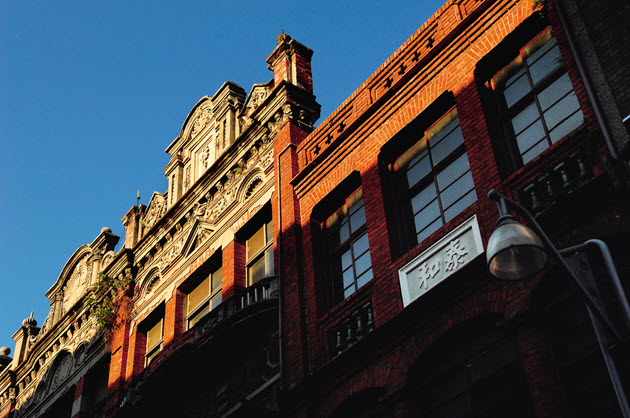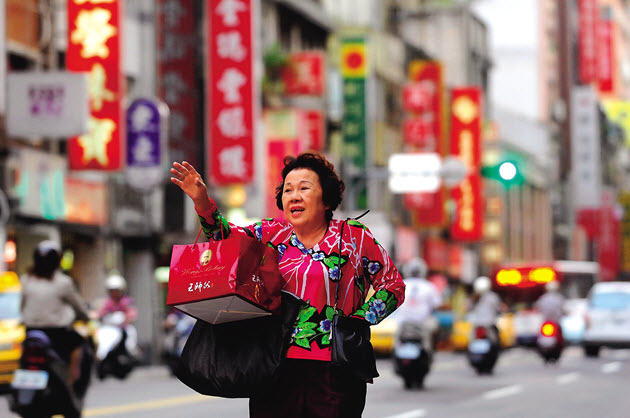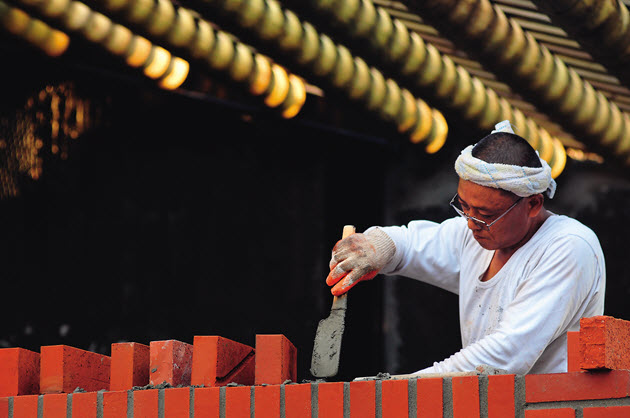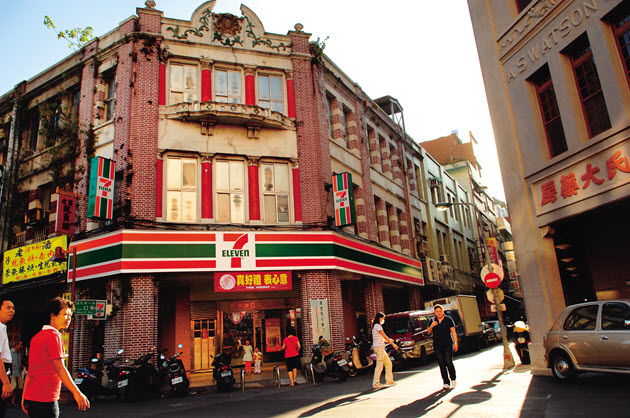Taipei's New West Side Story

Source:Chieh-Ying Chiu
Steeped in culture and basking in a wave of urban renewal, Taipei's West Side is undergoing a quiet metamorphosis. A new gateway to Taiwan, a new oasis in Taipei, the city's West Side is currently standing on the threshold of rejuvenation.
Views
Taipei's New West Side Story
By Jimmy HsiungFrom CommonWealth Magazine (vol. 433 )
The pace of change in Shanghai, known as the gateway to China, can leave one speechless. People often remark how the city has changed in just the few months since they last visited.
Taipei has been undergoing its own transformation, if not at quite the manic pace of Shanghai. Nevertheless, in Taipei's old, dilapidated West Side, time seems to have stopped for a generation or more.
But changes in Taipei City real estate prices over the past year reveal that something is cooking.
According to statistics provided by Yung Ching real estate company, property values in the Datong and Wanhua districts on Taipei's West Side have soared beyond the expectations of most, compared with the second quarter of last year, with the rate of growth ranking them second and third among all the city's districts, trailing only Songshan. (Table 1)
The driving force behind the growth has been urban rebirth and urban renewal.
The focus of urban renewal on the West Side has been on the areas surrounding Taipei Train Station, where frenetic development will soon turn the area into Taiwan's new international gateway.
The "Gate of Taipei" complex, twin towering 60-70 storey skyscrapers, is not only set to become a new Taipei landmark, but is also destined to become Taiwan's conduit to the world, with the future airport rapid transit system slated to run right to the foot of the two buildings. When leaving the country in the future, people will no longer have to drag all their things out to Taoyuan, as they will be able to directly complete all boarding procedures and baggage check-in at Gate of Taipei before taking an easy train ride out to the airport to catch their flight.
Behind this modern and convenient visage lies a level of comprehensive planning seldom seen in Taiwan. According to the Taipei City Government plan, terminals for all long- and short-haul public transport services, which were originally scattered around the surrounding area, will now be located within the now completed and operational Taipei Transfer Station.
Now all rapid transit, train and high speed rail connection for Taipei city, county and the airport will be concentrated within Taipei Main Station and the underground promenade connecting it with the Gate of Taipei complex.
Once the integration of the transport hub is completed, the vacant land that will be freed up, north of Zhongxiao West Road and south of Civil Boulevard and running west from Taipei Main Station about one kilometer to the Danshui River flood wall, will be transformed into Taipei City's central park. While the new park has yet to be designated with a formal name, city government officials are already privately referring to it as "Gateway Park."

Gate of Taipei and Taipei Transfer Station, as well as a major exhibition center, museum, historical park, recreational marina and massive green space still in the planning stages will all eventually take shape here. Architect Ray Chen says the renewal of the Taipei Main Station area will lead to a redefinition of the city's West Side, which will spell an imminent return to the glory days of bygone prosperity, as the area becomes the new gateway to Taiwan and a new oasis within Taipei City.
But the rejuvenation of the West Side is not without its obstacles, and one might even say that compared with the city's other districts, renewal on the West Side is particularly difficult. Yet despite the profusion of immediate obstacles, the storm appears to be breaking and clear skies appear to be visible just ahead.
Following the commencement of trial operations at Taipei Transfer Station in August, Q Square shopping complex will open for business in the same building in mid-November. Thereafter, a number of other landmark projects will one by one come to fruition as the gears of the West Side's resurrection begin turning.
Old Tales Spur Rebirth
Economic vitality can spur a city to prosperity while a history of arts and culture can bring about urban rebirth. Deputy Mayor of Taipei Lin Chien-yuan says once an urban area becomes highly developed, the city's original commercial and financial hubs will evolve toward greater diversity, but a city's urban narrative is just as important as its commercial infrastructure. The rejuvenation of Taipei's old quarter these past several years is precisely because "the West Side has many stories to tell."

Lin, a former professor with National Taiwan University's Graduate Institute of Building and Planning and now Taipei Mayor Hau Lung-Bin's chief advisor for urban planning, essentially serves as the lead architect of Taipei's current urban development. According to Lin, Taipei's current urban development aspirations are along three main lines – technology, waterfront areas, and arts and culture – along which three developmental belts will spring.
Of these, the third, the cultural belt, is an "L"-shaped zone running through the city. As Lin explains, this will run from the National Palace Museum in the north down to the Taipei Performing Arts Center and Taipei City Museum, both currently in the process of development, continuing south into West Taipei, then stretching east to the Huashan Arts District and out to the planned Taipei Pop Music Center in Nangang.
Lin says it is precisely because of the "West Side Stories" of Taipei's old quarter – the culture of temples and scholarly institutions of northern Datong District, such as Bao An Temple, the Confucian Temple and Dalong Elementary School, and the historical commercial area of Dihua Street in southern Datong District – that the area can adequately support the city's planned L-shaped cultural belt.
Treasures Hidden in Taipei's Old Quarter
Taipei's so-called old quarter is the area from which the city originally sprang, running from Wanhua District at the confluence of the Xindian and Danshui rivers, an area formerly known by its Minnan-dialect name of Beng-Kha (or in Mandarin, Mengjia), and stretching north to Dadaocheng and Dalongdong, or today's Datong District. This area was once the economic heart of Taiwan, the cradle that conceived Taiwan's entrepreneurial class. Of Taiwan's 30 biggest conglomerates, five trace their roots to this area. (Table 2)

Taipei City councilor Chen Yumei, daughter of Yakult Co., Ltd. chairman Chen Chung-kuang, grew up on Dihua Street, in Datong District. She recalls the 60s and 70s as a time when Taiwan was still subject to strict foreign exchange restrictions and the jewelry shops that dotted the streets of Datong District, particularly along Dihua Street, constituted an underground sort of "Taiwanese Wall Street."
The impression of Dihua Street among outsiders today is mostly that of a sales center for Chinese medicine and other traditional goods. Back in the day this was the center of Taiwan's gold trade and U.S. dollar currency trading, and a number of wealthy families who settled here in the Japanese colonial era still live discreetly among the labyrinthine lanes and alleyways of the Dihua Street area.
But as a consequence of the trend in Taipei of developing ever further eastward, the century-old glory of both the Wanhua and Datong districts have gradually slipped into decline.
Among Taipei's 12 administrative districts, Datong District surprisingly has the second smallest population and number of household registrations, only slightly edging out Nangang District. Datong District has a current population of just 124,000 in 46,000 households, nearly 40,000 fewer residents than the next smallest district in terms of population, Zhongzheng District.
In terms of per capita income, Wanhua and Datong residents have the lowest incomes of all Taipei's 12 administrative districts. With residents of Wanhua and Datong earning per capita annual income of NT$720,000 and NT$750,000, respectively, they simply cannot compare with the NT$1.01 million in per capita annual income among residents in adjacent Zhongzheng District. But it is unwise to look down on these two areas, particularly Datong District, which harbors surprising concealed riches. Consequently, real estate projects in Datong customarily do not advertise.
"There's not enough to satisfy even local residents' demand – why would anyone advertise?" asks Chen Yumei.
Urban Renewal Effect in the Offing
With the city government's policy to shift the focus of development from eastern Taipei back to the western districts, the agitation of construction firms and the undying dreams of getting rich quick among the general public, Taipei's "West Side Story" has suddenly caught fire.

The transformation of the West Side is now underway. Without most people even realizing it, the subject of urban renewal is quietly fermenting. In the coming two years, a number of eye-catching construction projects will be completed one by one, and the effect of West Side renewal will become plainly evident. So what will the new chemistry be as the history and culture of the city's old quarter is consumed in the wave of urban renewal? After the metamorphosis, who will rise again and who will be relegated to the shadows? The new West Side is set to write a new chapter of history.
Translated from the Chinese by Brian Kennedy
Chinese Version: 都市更新篇:新西城,新國門






